by Admin | Feb 21, 2014 | Languages
If you are a parent who wants to teach your children a bit of Vietnamese but aren’t sure where to start, we have found lots of great books, apps, language learning systems and some free games that will help your kids learn a bit of Vietnamese in a fun and stress-free way.
Since Vietnamese has six different tones it can be a bit difficult to learn, so the more material that you can expose your kids to, all the better. Unfortunately, there aren’t as many resources for Vietnamese as some of the other languages that we have covered, but there is still lots of great stuff that can help parents at home.
On the positive side, Vietnamese is based on the Roman alphabet (like English) so some people consider it one of the easier Asian languages to learn.
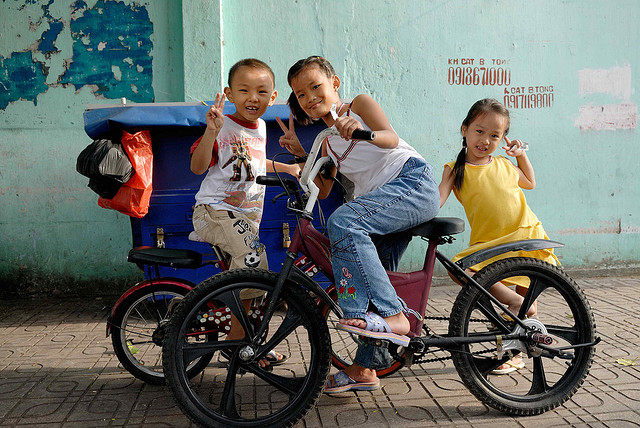
Vietnamese Kids Books
When teaching your children a new language at home you should invest in a good picture dictionary like First Words Vietnamese or the Vietnamese/English Children’s Bilingual Picture Book It’s great for kids to have a reference book that they can go back to if they are wondering about a particular word.
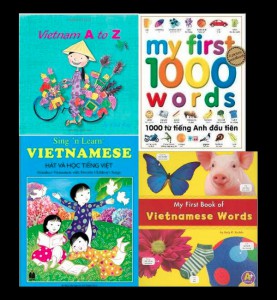 If you want a book that has both English and Vietnamese, and can teach children a little bit about Vietnam a very popular book is Vietnam A to Z. This book is great because it introduces Vietnamese culture in a fun and silly way.
If you want a book that has both English and Vietnamese, and can teach children a little bit about Vietnam a very popular book is Vietnam A to Z. This book is great because it introduces Vietnamese culture in a fun and silly way.
Listening to songs in another language is an easy way to get kids to learn basic vocabulary and pronunciation. A good resource with songs in Vietnamese is Sing ‘n Learn Vietnamese Book with Audio CD. This set has 14 songs and melodies that children will enjoy listening to.
Another way to help children become familiar with a new language is to find stories or books that your child already knows and read them in another language. Language Lizard is a site that offers dual language books for popular titles like Dear Zoo or The Wheels on the Bus, which just means that each page of the book includes Vietnamese and English text on the page.
Free Online Lessons
You can’t go wrong with Duolingo.com. The site is often used in schools for French and Spanish but they have lessons for pretty much any language that you can think of.
Free Online Games to Help Teach Vietnamese
- Digital Dialects has games for learning numbers, colors, and vocabulary in Vietnamese.
- Hello World This site is a little confusing to use, but it does have some good material including conversations, songs, a dictionary, games, and lots of other things.
- Vuontre is a cool Vietnamese children’s web site. Not for beginners.
Best Apps to Help Kids Learn Vietnamese
Apps are a fun and easy way to help kids learn a new language without them realizing they are learning something useful. Luckily there are some apps designed for kids that will teach them a bit of Vietnamese.
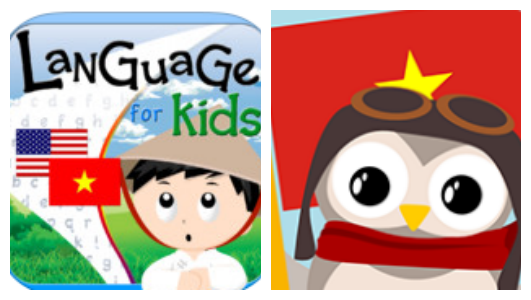
- Vietnamese-English Language for Kids has interactive audio flashcards and games in categories such as animals, basic human anatomy, colors, all with pronunciation from a native speaker.
- Gus on the Go has Gus visiting the cities of Hanoi, Da Nang, Nha Trang, and Ho Chi Minh City and going over how to how to properly pronounce vocabulary words in the following categories: animals, food, transportation, clothes, numbers, colors, parts of the body, and shapes.
Let us know if you have any Vietnamese resources that you use with your own family, we would love to share them with others.
photo credit: Padmanaba01 via photopin cc
by Admin | Feb 13, 2014 | Creative
Everyone should have more poetry in their lives. It is wonderful because it can be silly or serious, it can help you learn something about yourself or the world, and it is an excellent form of expression for anyone. Lots of children get their first introduction to language and books through stories (Dr. Seuss) and nursery rhymes that use poetic devices, but sadly somewhere along the way, poetry tends to fall by the wayside.
Since it is one of those things that kids generally love, we thought we’d look into some fun ways to include poetry in your daily life and hopefully help get kids excited about reading it on their own.
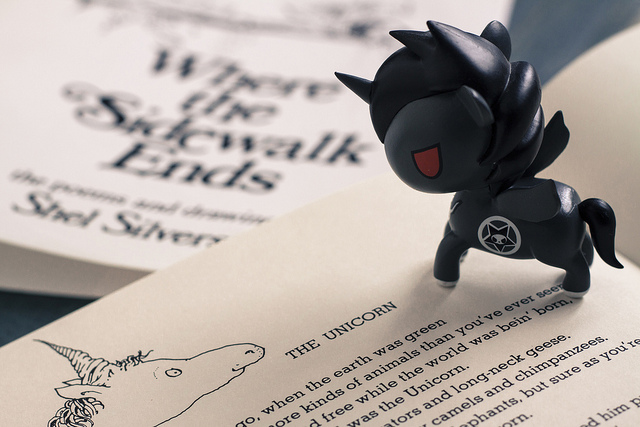
Books
The easiest way to gets kids interested in poetry is to get a good book and read it together. Since there are thousands of books to choose from, you should start with some of the more popular children’s poets. Almost anything from Shel Silverstein is a good choice, other favorite children’s poets to check out are Jack Prelutsky, Kenn Nesbitt, Jon Scieszka, Roald Dahl, Paul Janeczko, Marilyn Singer, Sharon Creech, or Allan Ahlberg.
If you want to get a collection or anthology for children, there is no shortage of material to choose from. Here are a few to check out:
- Poetry Speaks to Children – is a collection of more than 90 poems that were written specifically for children ages six and up. Some of the poets in this collection include Roald Dahl, J. R. R. Tolkien, Robert Frost, Gwendolyn Brooks, Ogden Nash, John Ciardi, Langston Hughes, Sonia Sanchez, Seamus Heaney, Dennis Lee, Rita Dove, Billy Collins, Nikki Giovanni and X. J. Kennedy. There is also a CD that comes with this book that has 50 of the poems being read, most by the poets themselves.
- Hip Hop Speaks to Children with CD is from the A Poetry Speaks Experience series (that also includes Poetry Speaks to Children). This collection has 50 songs and poems with 30 performances on the CD from Eloise Greenfield, Mos Def, Lucille Clifton, Oscar Brown Jr., Tupac Shakur, Maya Angelou, Queen Latifah, Nikki Grimes, Walter Dean Myers, Common, and Nikki Giovanni.
- A Child’s Book of Poems is a collection of famous classical poems, proverbs, limericks, nursery rhymes, and folk songs for children. This anthology has 200 pieces with beautiful illustrations to go along with the poems. Some of the poets include William Blake, Kate Greenaway, Emily Dickinson, Henry Wadsworth, Lewis Carroll, and Eugene Fields.
- Poems to Learn by Heart is a lovely collection of poems for children chosen by Caroline Kennedy. This beautifully illustrated book covers a wide range of topics and has some classical as well as contemporary poems. It is an excellent introduction for anyone.
Poetry Websites for Kids
If you are looking for something a bit more interactive, there are quite a lot of websites for kids. If you have a favorite contemporary poet, there is a good chance they will have their own site, some with games and links to their work. Some other websites that are great for kids are:
- Poetry4Kids is Children’s Poet Laureate Kenn Nesbitt website that has funny poems, games, a rhyming dictionary, writing lessons for kids, and lots more. There is a lot of great material on this site for kids.
- Mother Goose Club is a fantastic collection of Mother Goose resources. It has videos of all of the famous Mother Goose rhymes as well as songs and activities for young children.
- Giggle Poetry has hundreds of funny poems for kids to read and rate. This site is excellent because the poems are organized efficiently, and there are fun activities and games for kids to do.
- Story It has a great list of links to classical poems for children written by a variety of poets such as Christina Rossetti, Robert Louis Stevenson, and Edward Lear. The poems range from fun and lively to solemn and thought-provoking.
Apps
For those times where you may be stuck somewhere and want a quick fix for your kids, here are a couple of poetry apps that might come in handy:
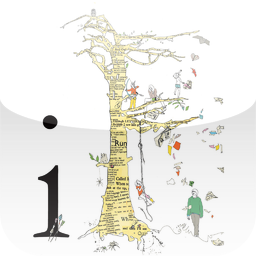
- iF Poems is a beautiful app that has 270 poems that are nicely illustrated and are read by some famous British actors like Helena Bonham Carter and Tom Hiddleston. The app isn’t specifically for kids, but you can search for poems by age range, and there are lots of poems for kids on this app.
- Nursery Rhymes for Kids is a free Android app that covers most of the basic nursery rhymes that kids love.
Finally…
I came across Classical Baby: The Poetry Show when I was looking for some music resources, and it’s a cool little intro for very young children. It is a compilation of 13 favorites from poets like William Shakespeare, John Keats, Woodie Guthrie, and Gertrude Stein that are read by famous people like Gwyneth Paltrow and Susan Sarandon.
I feel like I should end with a poem, but I won’t. Happy reading!
photo credit: Nomadic Lass via photopin
by Admin | Feb 6, 2014 | Sports
There are a lot of great reasons to get children interested in ballet. Not only does learning ballet enhance a child’s confidence, focus, physical strength, and grace, it also exposes them to great art and music in a way that other physical activities don’t. Dancing is an excellent activity for both girls and boys, and there are lots of easy ways to teach them about ballet at home. We have found some wonderful DVDs, books, music, and games that can help kids learn everything they need to know about ballet.
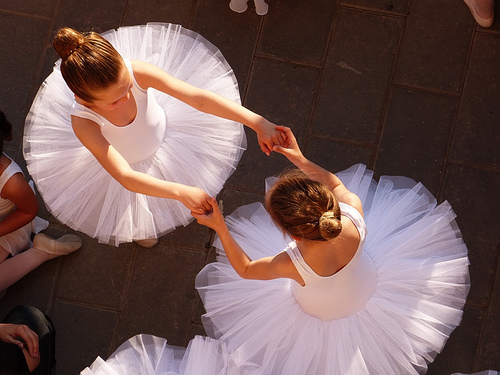
Books
Since ballet is such a favorite activity for young children to get interested in, there are some fantastic ballet books available. We are only featuring books that are a good introduction to ballet, but many storybooks would also be wonderful for any ballet obsessed child. Here are a few charming books about ballet:
- Prima Princessa Ballet for Beginners by Mary Kate Mellow is a book from the same people who did the Prima Princessa DVDs. This book is sort of an insider’s look at the New York City’s School of American Ballet (SAB) in Lincoln Center for the Performing Arts and one of the cool things about it is that it shows how dancers train. It has images of young students demonstrating all the basic positions, and what goes into getting ready for a performance.
- A Child’s Introduction to Ballet by Laura Lee and Meredith Hamilton is a book and CD that introduces kids to twenty-five of the world’s best-loved ballets through fun facts, dancing instruction, history, information, artwork, and profiles of the world’s great dancers, choreographers, and composers. There are also instructions on ballet positions and the key moves that kids will love to learn.
- Ballerina: A Step-by-Step Guide to Ballet by Jane Hackett is an introduction to ballet guide that has beautiful photographs, informative text, and a free instructional DVD to help beginner and intermediate ballet students.
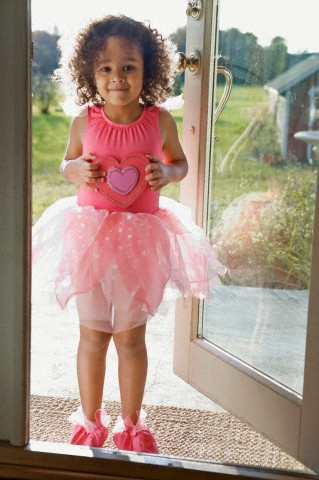
Websites
- Wish Upon a Ballet has everything your young ballet dancer needs to know. The site has ballet history, ballet stories information on famous ballet dancers, and much more.
Ballet Videos and DVDs
An easy way to get small children to learn a few ballet positions and some of the basic terms is to let them watch a DVD. There are quite a lot of ballet DVDs for kids, here are a few of the most popular and some of our favorites:
Toddlers and preschoolers will love Baby Ballet. It is a fantastic introduction for children ages 4 to 6. You can get the Baby Ballet DVD on its own, or as part of a compilation, DVD called Dancing for Kids also by Rosemary Boross that includes Baby Ballet as well as with Tot Tap and Junior Jazz.
Another great choice for younger kids is Tinkerbell’s Learn Ballet Step by Step. You can view a preview with instructor Michelle Lungberg, who takes kids through step-by-step instructions & easy-to-learn steps. Some of the things that are taught include
1st through 5th positions, Pliés, Tondus, Degajés, Rondejámbs, Passés, & Piqués.
Petite Feet for kids ages 2-5 uses engaging and imaginative exercises, games, and stories to introduce children to basic ballet positions and vocabulary, as well as general dance and musical concepts. The preview gives a good overview of what you can expect with this DVD.
When small kids are interested in ballet, it’s a great opportunity also to get them interested in some of the classic ballet stories and music as well. Along with the instructional DVDs, your kids might really enjoy learning about ballet stories. There are a few really cool DVDs that will introduce kids to some of the great ballets in a kid-friendly way. A great series that does this is by Prima Princessa. They have DVDs for the Swan Lake, The Nutcracker, and Sleeping Beauty.
A similar DVD to the Prima Princessa DVD is the My First Ballet Collection that has excerpted performances including Sleeping Beauty, The Nutcracker, Swan Lake, and Cinderella as well as others that are perfect for young kids.
Hopefully, you found something that can help your budding ballerina or ballerino. If you have any great resources that you use to teach your kids ballet at home, please let us know in the comments below.
photo credit: Patricia Mellin via photopin cc
photo credit: calafellvalo via photopin cc
by Admin | Feb 3, 2014 | Music
If you are a parent who would like your child to learn the Suzuki method and are wondering if it is possible to teach your kids some of the Suzuki concepts yourself, we have found some helpful resources.
Having a music instructor is the ideal way to go if you want your kids to learn Suzuki, but unfortunately, for a lot of families, private lessons are not an option. Luckily there are some great online video lessons, books, and websites that can be used to teach Suzuki to children.
Suzuki method is a philosophy of teaching music created by Sin’ichi Suzuki. The main idea is that all children are capable of learning music from their environment using the same basic principles of language acquisition. In the same way that a child learns his or her mother tongue, the Suzuki method focuses on starting a child early, listening, parent involvement, encouragement, and constant repetition.
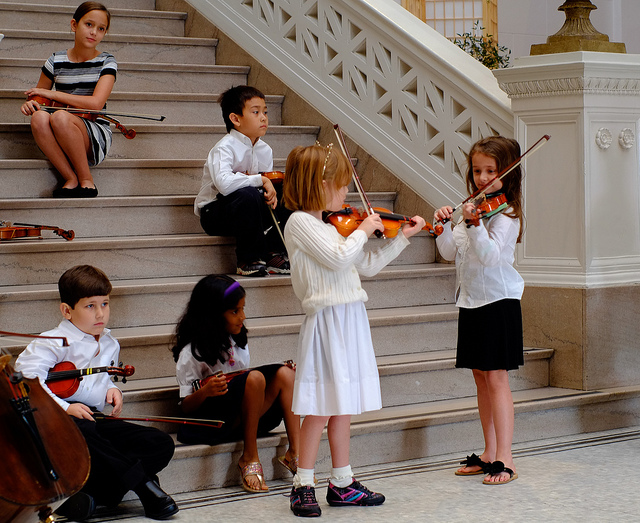
Generally, the Suzuki method is used with beginner violin. Still, you can also use it to learn viola, cello, bass, flute, guitar, harp, piano, organ, voice, recorder, and early childhood education. We are going to focus on resources for learning the violin, as it is the most common Suzuki instrument for children.
If you would like to learn a bit more about Suzuki, there is a nice short documentary about a Suzuki class at the Elaine Kaufman Cultural Center that gives an excellent overview of a lot of the concepts.
The Basic Principles of Suzuki
If you would like to help your kids learn an instrument using the Suzuki philosophy, you will need to follow some of the basic principles:
- An Start Early- Suzuki students generally start at a very young age, sometimes as young as two, but more typically between the ages of 3 and 5.
- Listening -Children will learn to play music by listening; they don’t learn to read music until much later. Parents will need to play the Suzuki CDs repeatedly to help children become familiar with the music and make it easier for the child to play.
- Loving encouragement- One of the more difficult principles to follow is finding ways to make practicing fun so that kids look forward to it. Parents should praise their children frequently and try not to push them. A couple of books that can help find creative ways of keeping practice fun are Step by Step 1A: An Introduction to Successful Practice for Violin and I Love to Practice! Kit for Suzuki Violin Book 1. Step by Step 1A focuses on age-appropriate practice habits, including listening, singing, and dancing, to playing music. The CDs that come with the book include pieces from the Suzuki Violin School. I Love to Practice has over 60 practice games for Suzuki violinists and other games that parents can play with their children during practice.
- Parental Involvement- Parents play an active role in the learning process by guiding music practice and encouraging and motivating kids. Parents need to be involved when their child is practicing each day.
- Repetition – Through repetition, children will have to master each piece before moving onto the next lesson. They will also have to constantly go back and play every piece of music they have learned on a regular basis.
- Learning with other children and Performing Often – These two principles are believed to help children elevate their skills. If you are teaching your kids Suzuki at home, it will be challenging to follow these ideas unless you know other children who are also studying the Suzuki method. A couple of ways to get around this is by taking your child to local concerts and listening to classical music at home to help elevate your own child’s skills. You can also have your kids perform for relatives and friends to help encourage their musical talents.
Before Learning to Play
Suzuki students don’t start to learn to read music until they have learned to hold the instrument well.
- Holding the Violin and the Bow Jason Barber has a really good video lesson for parents to show them how they can teach themselves and their kids how to hold the violin. He also has a good video on how to hold the bow properly if you want some hints on how to make this more fun check out some of these fun bow hand games for kids.
- Posture – Be sure your child is using appropriate standing posture while practicing.
Suzuki Books for Kids
If you haven’t already got it, you will need to get the Suzuki Violin School Revised Edition Violin Part Book & CD Volume 1 This is the first volume from the Suzuki Violin School. There are ten volumes in total that take many years to work through. This book covers the fundamentals that you will need to go over with your child; you can use it in conjunction with some of the free online Suzuki lessons listed below to help get through some of the more difficult concepts. It is useful to get the CD for the child to listen to. If you are teaching your child piano or one of the other instruments, there are Suzuki School Editions for all of the different instruments.
If you would like to learn a bit more about the Suzuki Philosophy and the parent’s role in encouraging a child the most popular books are
Free Suzuki Online Violin Lessons
The McKinley School has a fantastic roundup of a seventeen week Suzuki class with links to YouTube videos. Scroll down to week one.
Here is a simple Suzuki lesson with a small child. Parents can use some of the same techniques to teach their kids.
Naperville Lessons has a Book 1 Suzuki Violin School lesson in two parts. It’s not an easy lesson to follow along to as he goes very quickly. If you stop it as you go through, you should be able to pick up some good tips.
Red Desert Violin has an online violin school that teaches using the Suzuki method.
Suzuki Websites
Suzuki Violin Lessons has a really good list of practicing and learning resources.
If you would like more resources to help children learn the violin check out our post on teaching kids violin.
photo credit: RW Sinclair via photopin cc
by Admin | Jan 27, 2014 | Sports
If you know how to snowboard and would like to teach your kids, or would like to practice with your kids after a lesson, we have some great tips and resources to help you get started.
Parents might wonder what the best age to get kids started; it used to be that age seven was thought to be the best age to start because most kids begin to develop enough core strength and coordination to be able to handle the board. That idea has changed in the last five years with the introduction of new gear and the Riglet Parks by Burton, which have made it possible for kids as young as three to learn. There are still lots of people who think that is too young, and it is best to wait until kids are a bit older, but if you have a child who is eager to learn and you want to teach them, then there is no reason not to.
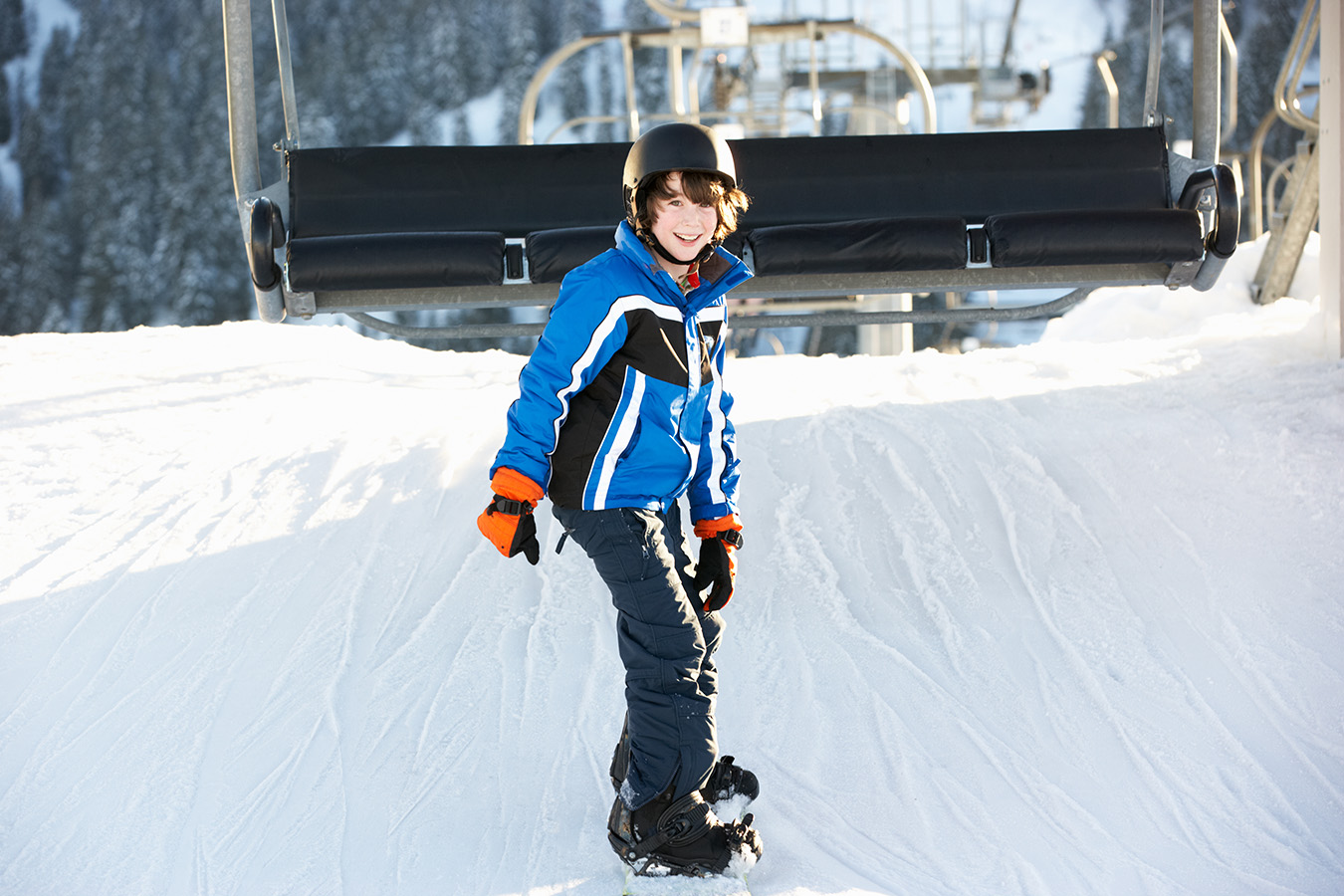
Before you Start
- Make sure your kids want to learn. If they would rather ski, then let them ski. Lots of kids start on skis and then switch over to boarding when they are ready. Just because a three-year-old can do it, doesn’t mean that they are going to want to snowboard. If they don’t want to learn, then it will be challenging to teach them anything, and since the point of boarding is to have fun, if your kid isn’t into it, then leave it for a while and try again another day.
- Get them used to the gear. Before hitting the slopes, you can get them used to what they can expect. If you have bought a board, have them stand on it and show them how to distribute their weight evenly. You can explain to them how they will be using their toes and their heels to change direction and stop. Have your child practice putting on and taking off the board while sitting down. Show the parts of the board, so they will know what you are talking about when you are on the hill.
- Plan on keeping learning sessions short in the beginning. Young kids don’t have the kind of endurance and focus that older kids do. So keep your beginning lessons short, and let your child take breaks as often as they need to. Younger kids will probably only be good for about an hour before needing a break.
Gear for Kids
Before kids can even start, they need to have the right gear. Make sure you have/rent:
- Snowboard – If you are looking for a board for a 3 to 5-year-old, check out these from Burton. They are light, flexible, and have a convex base that makes it easy for a kid to roll from edge to edge and to learn how to stop. You can get these boards as small as 80 cm so kids as young as three can use them. If your kids are very small, you may want to have a look at the Burton Riglet Board Reel that attaches on to the front of the board, so you can tow your toddler along and help get them used to riding and balancing on the board. If you are looking for some other board for small kids, you can try the Flow Micron Mini that also comes in 80 cm length or the Rome Minishred Rocker that you can get as little as 90 cm.
- Boots – There are some great Velcro soft boarding boots around, some of the Velcro Grom boots are available as small as a child’s 11.
- Helmet – Make sure to get a snow sports helmet that will give them protection for the back of their heads as well as allow space for their goggles and will keep their heads warm but allow for ventilation if they get too hot.
- Goggles are essential to help protect kid’s eyes from UVA and UVB sun rays, which are super harsh when reflected off the white snow.
- Gloves or Mittens. Buy gloves that are warm, waterproof, and breathable. You can get special snowboarding gloves that have an outer wrist protector. If you don’t have gloves with a wrist protector, consider using inline skating wrist guards to help protect your kids from getting a broken wrist.
- Warm Clothing. Have your kids dress in clothing that is water-resistant and won’t make kids sweat too much when they get hot. Make sure they are dressed in layers.
Basic Skills for Kids
Whether you are practicing on a small hill, a backyard, local hill, or resort, these are the basics that you are going to want to teach your kids:
Balance – If your kids are very small, an easy way to start is by showing them how to balance on their board. If you have a Riglet Board Reel, you can pull them around with that to help them get used to the feel of the board.
Skate/Glide – Your kids will need to know how to get around on their board, so one of the first things you should teach them is how to skate. With their front foot strapped in, show them how to move the board by using their back foot and pushing using small steps close to the board. Have them do two pushes, then put their back foot right in front of the rear bindings. If you can, attach a stomp pad to the board to make skating and proper foot position easier. Do this on flat terrain and have them do it over and over again until they get it. Snowboard Pro Camp has a good instruction video on how to skate.
Falling and getting up – If your kids are just learning, then they are going to be falling a lot. It’s best to teach them how to fall to avoid injury. Try to get them to fall to the uphill side of the slope and to fall onto their forearms or to make a fist rather than falling onto their hands. Once they are down, show them how to get up by lying on their back and put their feet up towards the sky and rolling over quickly on to their knees. Then get them to stand up from their knees with their hands in front of them.
Stopping and controlling speed – It’s essential that your kids know how to stop. Show them how to turn onto their heel side edge and lift their toes to stop. Greg Anderson has a good video if you would like a visual demo. To further gain some control over the board, show them how to do a heel slide and a toe slide. Snowboard Pro Camp.com has lots of great intro videos, including these on how to do a heel slide and a toe slide.
Turning – Once kids have learned how to toe/heel slide, then they can start to learn how to turn on their board. There are two ways to turn: heel-side and toe-side. When kids are first learning to turn have them practice on a beginner’s slope. Snowboard Pro Camp has another excellent tutorial on how to turn.
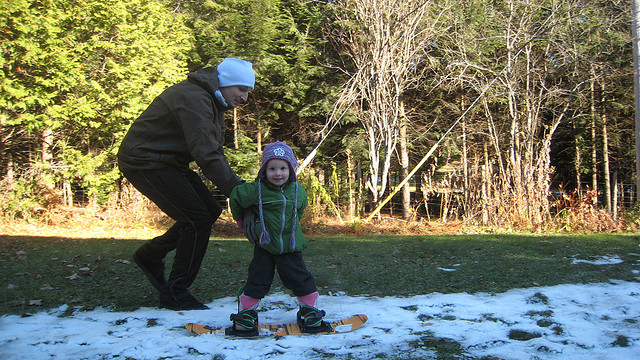
Etiquette Kids Should Know
If you are heading out to a local hill, make sure you go over with your kids some of the basic etiquette.
- The most crucial rule that kids should know is that that skiers and boarder in front of them always have the right-of-way.
- It is also important that they never stop where they can’t be seen by people above them on the hill.
- If they do fall, they should get up quickly to avoid getting run over.
- Before starting down the slope, they should look uphill to make sure no one is coming.
- Before turning, they should check their ‘blind spot’ for other boarders and skiers.
Free Online Lessons for Kids
- The Kellogg Show has an excellent overview of how to approach a lesson with a very small child. Including having the kids go down the hill sitting on the board as though it is a sled, so they can see how fun it is. It also shows how to teach kids to stop and keep them motivated with a hot chocolate reward.
- Snowboards Secret TV follows a nine-year on a simple lesson for a beginner. It gives a useful review of what you should be going over with your kids.
- A former instructor has a good video tutorial on how to teach kids. He goes over tips on gear, skating/gliding, stopping, heel turns, toe turns, c-turns, and s-turns.
Hopefully, you found something that might help you teach your kids to snowboard. If you have any tips for kids, let us know in the comments below.
photo credit: steveyb via photopin cc










